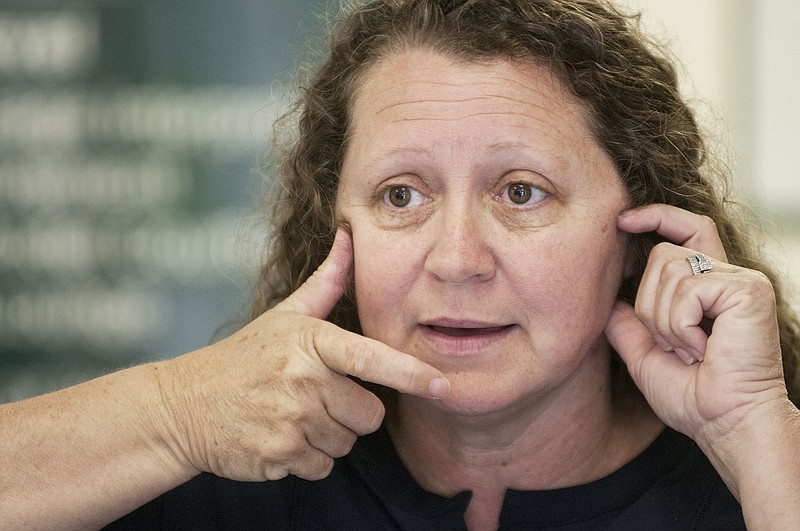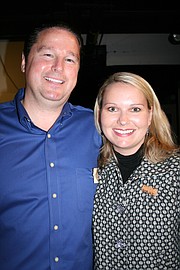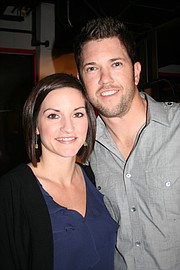Standing in front of 19 sign-language interpreters in a classroom at the Burton Business and Economics Building, Barbara Garrett is trying to teach the room the difference signing "silly" and "stupid."
There are hand movements, facial expressions, even eyebrow positions that can signal slight differences between these two words or any others in American Sign Language.
"What (interpreters) are doing is thinking about, "Well if I'm interpreting for a deaf student at a school, how can I take that information and make it make sense for them in a visual language?'" Garrett said Tuesday.
Garrett - a sign language professor and program director at William Woods University - is one of two ASL instructors conducting the Rural Educational Interpreter Skill Enhancement Training, a two-week sign language immersion course for interpreters from rural Missouri towns.
Training goes through Friday and is co-sponsored by William Woods and the Missouri Commission for the Deaf and Hard of Hearing. Participants are attending via a grant from the Department of Elementary and Secondary Education (DESE).
"They reason DESE wants to invest in the rural interpreters is that they have a lot less opportunities for professional development and the school districts have a harder time finding interpreters to hire in rural areas," Garrett said.
Interpreters use little, if any, spoken words throughout the course and make regular visits to a video lab to practice their hand movements and facial expressions. Like a practice swing or putt, going mostly silent lets participants narrow in on fundamentals necessary for maximum execution.
"How am I going to let someone know with my hands or my manual gestures or facial expressions what I want?" Victoria Brooks, an interpreter in the Jefferson City School District, said. "I'm so reliant on the English language, but to just turn it off and turn off that voice to get that message across sends you back to a deaf role and how much they have to struggle to get the hearing world to understand what they need and what they want."
Annie King, also a JCSD interpreter, said that the teachings will pay dividends for how she signs to her students.
"It takes what we do every day normally and puts it into how we can use this material and how to interpret this in a specified form," King said. "It's focused on educational interpreting."
The state of Missouri will implement a new interpreting certification exam called the Boards for the Evaluation of Interpreters beginning Oct. 1.
The DESE grant allows students, like Brooks, to attend the seminar for free and helps them focus on the areas necessary to get certified and remain employed.
"I think the test is going to be better because it relies on more English proficiency," Brooks said. "...It is like first-hand knowledge on what's coming up to better educate our students that are deaf to meet the quality of education that hearing students get," Brooks said.
Garrett hopes her seminar student can sharpen up their abilities so that they can better serve their students.
"We try to give them some tools to bring back and some support to what they're trying to do," Garrett said. "It's for the kids."



